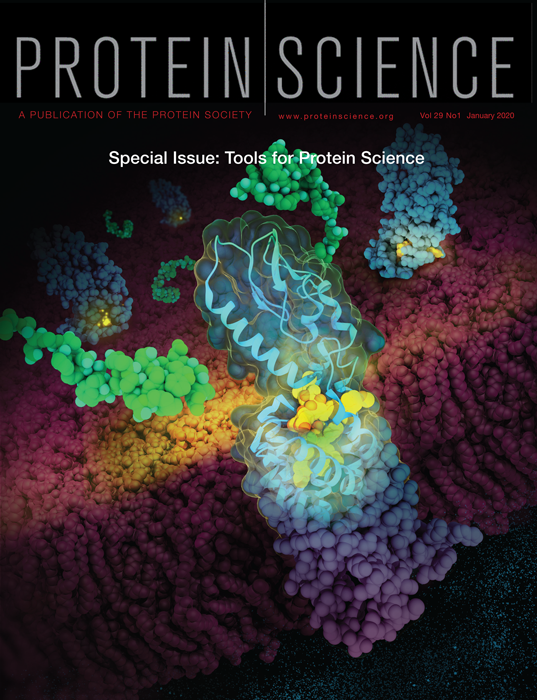Glucagon-like Peptide-1 and Diabetes
GLP-1 (glucagon-like peptide-1) receptor (blue, PDB structure 5NX2) recognizing a GLP-1 analog (yellow), with liraglutide (green, from PDB structure 4APD) free in solution. The cell membrane is shown in red. Open access to these and related structures in the PDB will facilitate discovery and development of new treatments for diabetes.
This image by Maria Voigt was highlighted on the cover of a special issue of Protein Science focused on Tools for Protein Science. In this issue, the article RCSB Protein Data Bank: Enabling biomedical research and drug discovery demonstrates how publicly available structural data reveal interesting insights into the impact of the three‐dimensional (3D) structures of protein targets important for discovery of new drugs (e.g., G-protein-coupled-receptors, voltage‐gated ion channels, ligand‐gated ion channels, transporters, and E3 ubiquitin ligases).





